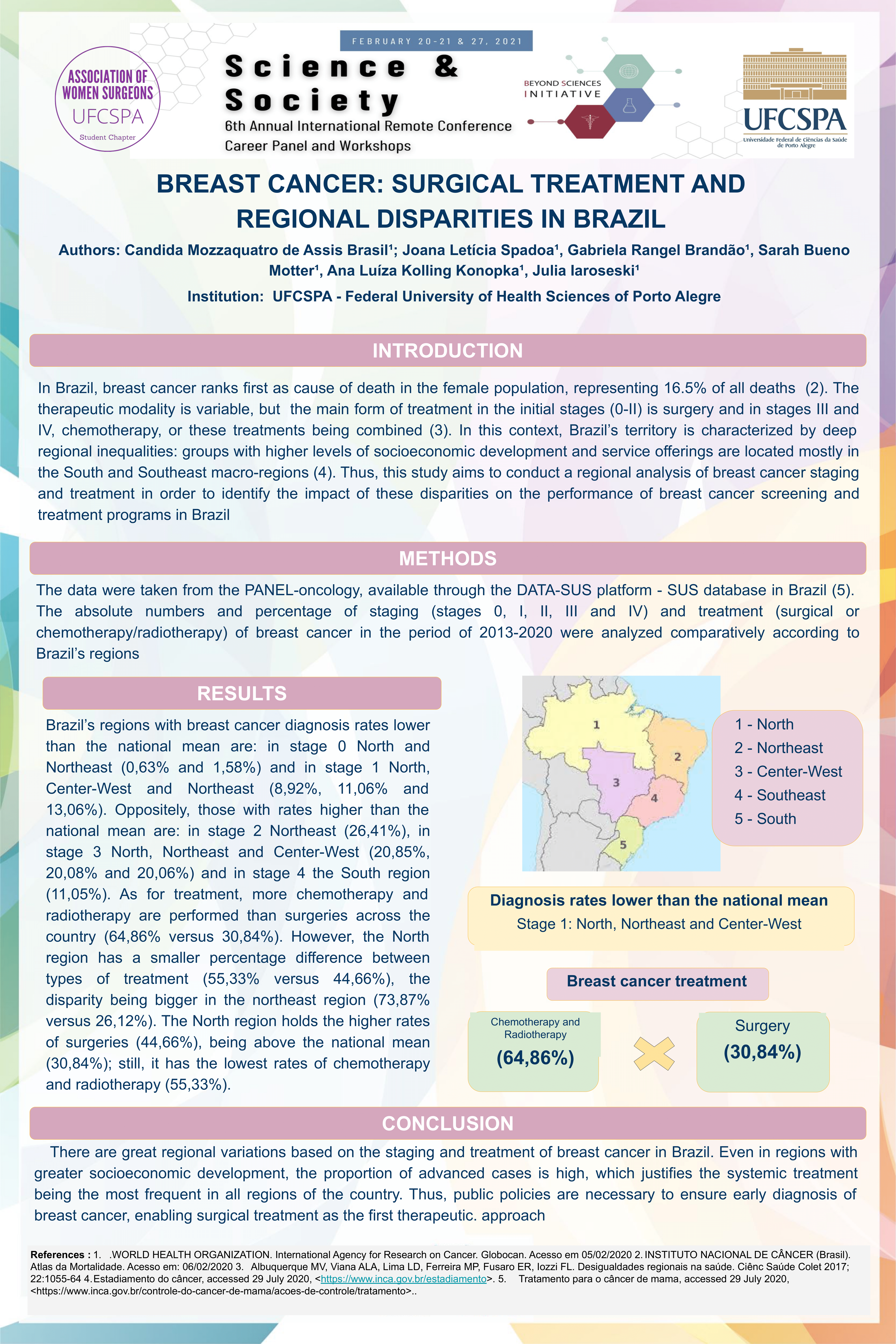Conference 2021 Poster Presentation
Project title
Breast cancer: surgical treatment and regional disparities in Brazil
Authors and Affiliations
Candida Mozzaquatro de Assis Brasil1, Ana Luiza Kolling Konopka1, Joana Leticia Spadoa1, Sarah Bueno Motter1, Gabriela Rangel Brandão1, Julia Iaroseski1
1. Health Sciences, UFCSPA – Federal University of Health Sciences of Porto Alegre, Porto Alegre, Brazil
Abstract
Background
In Brazil, breast cancer ranks first as cause of death in the female population, representing 16.5% of all deaths (1). The therapeutic modality is variable, but the main form of treatment in the initial stages (0-II) is surgery and in stages III and IV, chemotherapy, or these treatments being combined (2). In this context, Brazil’s territory is characterized by deep regional inequalities: groups with higher levels of socioeconomic development and service offerings are located mostly in the South and Southeast macro-regions (3). Thus, this study aims to conduct a regional analysis of breast cancer staging and treatment in order to identify the impact of these disparities on the performance of breast cancer screening and treatment programs in Brazil.
Methods
The data were taken from the PANEL-oncology, available through the DATA-SUS platform – SUS database in Brazil (4). The absolute numbers and percentage of staging (stages 0, I, II, III and IV) and treatment (surgical or chemotherapy/radiotherapy) of breast cancer in the period of 2013-2020 were analyzed comparatively according to Brazil’s regions.
Results
Brazil’s regions with breast cancer diagnosis rates lower than the national mean are: in stage 0 North and Northeast (0,63% and 1,58%) and in stage 1 North, Center-West and Northeast (8,92%, 11,06% and 13,06%). Oppositely, those with rates higher than the national mean are: in stage 2 Northeast (26,41%), in stage 3 North, Northeast and Center-West (20,85%, 20,08% and 20,06%) and in stage 4 the South region (11,05%). As for treatment, more chemotherapy and radiotherapy are performed than surgeries across the country (64,86% versus 30,84%). However, the North region has a smaller percentage difference between types of treatment (55,33% versus 44,66%), the disparity being bigger in the northeast region (73,87% versus 26,12%). The North region holds the higher rates of surgeries (44,66%), being above the national mean (30,84%); still, it has the lowest rates of chemotherapy and radiotherapy (55,33%).
Conclusions
There are great regional variations based on the staging and treatment of breast cancer in Brazil. Even in regions with greater socioeconomic development, the proportion of advanced cases is high, which justifies the systemic treatment being the most frequent in all regions of the country. Thus, public policies are necessary to ensure early diagnosis of breast cancer, enabling surgical treatment as the first therapeutic approach.

